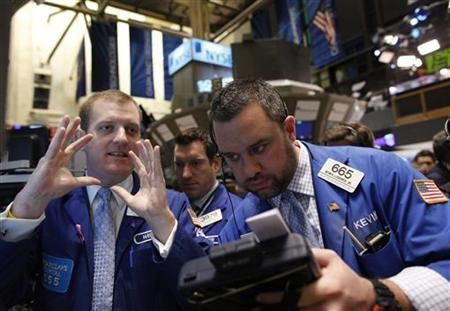How to Trade the News: A Guide to the Underreaction-Overreaction Cycle

News events drive the financial markets. To trade them profitably, one needs to understand how analysts and the market react to them.
The reaction almost always consists of two phases: underreaction and overreaction. That is, the market, analysts, and unprofitable traders first underreact to news events and then overreact to them.
Case Studies
BP Oil Spill:
The underreaction was extreme in this case. When the initial oil well explosion happened on April 20, 2010, most equity analysts failed to downgrade BP (NYSE:BP), arguing that the Deepwater Horizon site was just one of many drilling rigs.
However, from April 20, BP stock went on to plunge as much as 55 percent as analysts covering BP apparently failed to grasp the severity of the disaster.
In the subsequent overreaction, some thought that BP would not survive in its current form and that it would either be acquired, broken apart, or go bankrupt.
BP, however, survived the disaster intact and its shares are currently down only 22 percent down from pre-April 20 levels.
European Debt Crisis:
The underreaction in this case was the fact that market participants were not selling the euro currency soon enough – even as Greek bond yields skyrocketed to astronomical levels. Their rationale was that Greece is only a small part of the euro zone.
Once the crisis blew up and hit the front pages of every financial publication, the overreaction was extreme. Many predicted the imminent (or at least the inevitable) collapse of the euro. Bloomberg ran a prominent article stating that the best forex forecasters at time expected the euro to hit parity against the US dollar.
Of course, none of that happened and the euro went on to soar against the US dollar in late 2010 and early 2011.
During the height of pessimism in June 2010, analysts forgot that Greece was indeed only a small part of the euro zone. Moreover, Germany, the euro zone’s largest economy, was doing more than fine.
The Subprime Mortgages Crisis:
The subprime mortgage crisis exemplifies underreaction-overreaction on a longer time frame.
Initially, Federal Reserve Chairman Ben Bernanke infamously dismissed it and said it would not impact the overall economy. Meanwhile, as risk assets declined in price, many investors kept on buying the dips – as they have routinely done so for the past five years.
However, when the crisis became apparent and full-blown, extreme pessimism and overreaction set in. Some of the same analysts and investors who underreacted now expected a global Great Depression, the collapse of almost every single Wall Street bank, and possibly the end of Western capitalism.
As a result of their pessimism, these same investors who sold too late also missed out on the tremendous rally that started in March 2009.
Conclusions
Underreaction and then overreaction is seen in almost every single market-moving news event. The trick is figuring out the timing of the underreaction-overreaction cycle to get ahead of it, which is not easy.
To time the underreaction- overreaction cycle, traders need to rely on their past experience and analytical ability. It also helps to know the tone of the cycle, especially at the critical juncture when underreaction turns into overreaction. This inflection point closely coincides with the point of maximum pessimism, which occurs when the tone turns apocalyptical.
For the subprime mortgage crisis, the point of maximum pessimism didn’t come with the collapse of the housing bubble, the realization that recession was unavoidable, or the bankruptcy of Lehman Brothers.
Rather, it came when some feared the fall of Goldman Sachs, forecast the S&P 500 would plunge to 500, and a few feared the collapse of capitalism itself.
For the European debt crisis, it came when some predicted the imminent collapse of the euro currency and the best forex forecasters in the business expected the euro to hit parity with the US dollar.
Interestingly, the infamous EUR/USD parity Bloomberg article was published on the date of the market bottom for EUR/USD.
Click here to follow the IBTIMES Global Markets page on Facebook
© Copyright IBTimes 2025. All rights reserved.





















